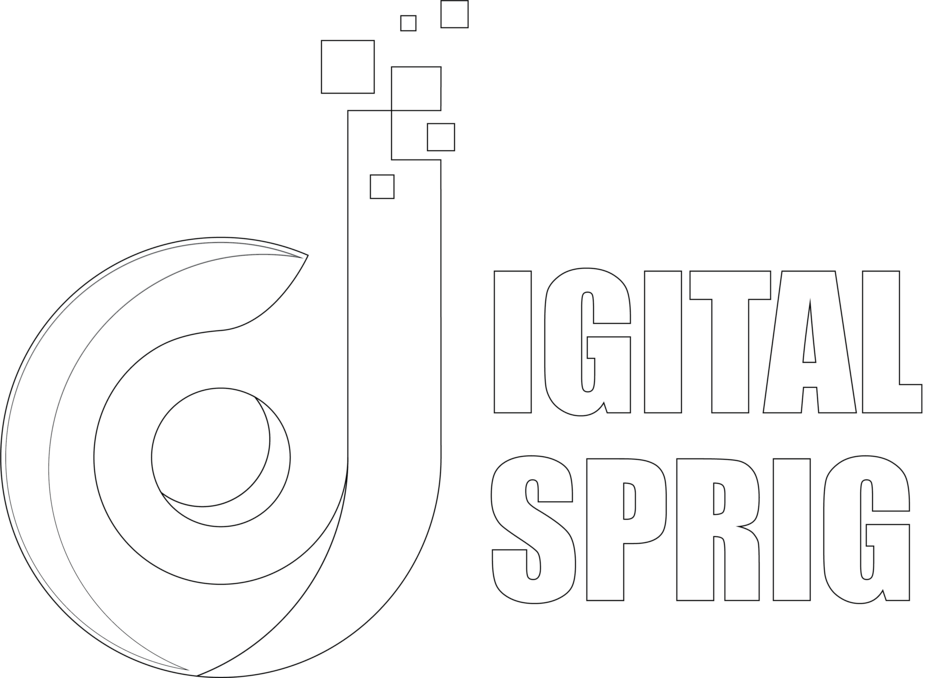Just examine the world of marketing automation, where you can streamline your efforts and maximize your results. In this guide, you’ll discover powerful strategies designed to enhance your campaigns and improve your engagement with customers. With the right approach, you can save time and boost efficiency, allowing you to concentrate on what matters most—growing your business. Let’s explore how to transform your marketing techniques with automation and achieve your objectives with ease.
Key Takeaways:
- Identify your target audience and segment them effectively to tailor your marketing messages and increase engagement.
- Leverage data analytics to track customer behaviors and preferences, allowing for the optimization of marketing campaigns over time.
- Integrate various marketing channels, such as email, social media, and CRM systems, to create a seamless customer experience and improve overall efficiency.
Types of Marketing Automation Strategies
Your marketing efforts can be greatly enhanced through various marketing automation strategies. Each one is designed to streamline processes, improve efficiency, and lead to better engagement with your audience. Understanding the options available will help you choose the best fit for your goals. Here are some popular types:
| Strategy | Description |
|---|---|
| Email Marketing Automation | Automating email campaigns to enhance client communication. |
| Social Media Automation | Scheduling and managing social media posts efficiently. |
| Lead Scoring Automation | Identifying and ranking leads based on engagement. |
| CRM Automation | Streamlining customer relationship management tasks. |
| Analytics Automation | Automatically tracking and analyzing marketing performance. |
This overview outlines different approaches to help you effectively strategize your marketing automation.
Email Marketing Automation
Even with the right audience, your success hinges on how you engage them through email. Email marketing automation enables you to send personalized messages at the right time, driving conversions and building relationships with minimal manual effort.
Social Media Automation
While managing multiple social media platforms can be overwhelming, social media automation can simplify this process. It allows you to schedule posts, track engagement, and create targeted campaigns, enabling you to maintain a consistent online presence without sacrificing too much time.
It is important to find a balance in your social media automation efforts. Using automation tools can save time but consider the potential drawbacks of reduced genuine human interaction. Striking a balance between automated posting and integrating authentic engagement with your audience is vital for maintaining a positive brand image. With proper use, it can significantly enhance your efficiency, expand your reach, and connect meaningfully with your audience.

Pros and Cons of Marketing Automation
Assuming you are exploring marketing automation, it’s imperative to weigh the advantages and disadvantages. The following table summarizes the key pros and cons to guide your decision-making process:
| Pros | Cons |
|---|---|
| Increased efficiency | High initial investment |
| Better targeting | Complexity of setup |
| Consistent communication | Potential for errors |
| Data analytics capabilities | Dependence on technology |
| Improved lead nurturing | Possibility of losing the personal touch |
| Time-saving | Learning curve for staff |
Advantages of Automation
Assuming you implement marketing automation, you can experience significant benefits. Automation can streamline your processes, saving you time and effort while allowing better targeting of your audience. With tools to manage customer relationships and data analytics, you can enhance lead nurturing significantly.
Disadvantages to Consider
Cons of marketing automation may impact your strategy. Some of the most troubling aspects include the high initial costs to set up the system, as well as the complexity involved in the setup process. An overreliance on technology can lead to potential errors and cause you to lose the personal touch in communication with your audience. Additionally, staff may experience a learning curve that could hinder the implementation process.
Step-by-Step Guide to Implementing Automation
To implement effective marketing automation strategies, follow this step-by-step guide. Understanding each step will ensure a smooth transition into automation and allow you to generate better results for your campaigns. For more in-depth insights, check out The Ultimate Guide to Marketing Automation.
| Step | Description |
| 1. Define Your Goals | Identify what you want to achieve through automation. |
| 2. Choose the Right Tools | Select software that fits your needs and budget. |
| 3. Create Workflows | Design automated processes to streamline your marketing. |
| 4. Test and Optimize | Evaluate performance and make necessary adjustments. |
Define Your Goals
StepbyStep, the first phase in implementing automation involves defining your marketing goals. You should pinpoint specific objectives, such as increasing leads, engaging customers, or enhancing retention. By clearly outlining what you want to achieve, you create a roadmap that will guide your strategy.
Choose the Right Tools
If you want to maximize the benefits of automation, selecting the right tools is crucial. Assess your needs and find software that aligns with your marketing objectives and budget. Look for platforms that offer user-friendly interfaces, effective integrations, and robust support.
Automation tools can significantly enhance your marketing efforts by streamlining processes and freeing up your time for strategic tasks. However, it’s important to evaluate features such as analytics, lead scoring, and customer segmentation. Neglecting to choose the right tools may lead to workflow inefficiencies or insufficient reporting capabilities. Investing in effective solutions from the start will lead to more productive outcomes, improving your overall marketing performance.
Key Factors to Successful Marketing Automation
Despite the complexity of marketing automation, certain key factors ensure your success. Focus on the following crucial elements:
- Audience Segmentation
- Data Quality
- Personalization
- Integration
- Performance Metrics
Knowing these factors will greatly enhance your marketing initiatives and ROI.
Audience Segmentation
One effective strategy for harnessing marketing automation is through audience segmentation. By dividing your audience into specific groups based on demographics, preferences, or behaviors, you can tailor your messages and increase engagement. This personalized approach is vital for driving conversions and ensuring that your audience receives content that resonates with them.
Data Analysis and Reporting
One crucial aspect of any marketing strategy is data analysis and reporting. These processes allow you to track performance and make informed decisions based on real-time insights. By leveraging analytics, you can identify patterns in user behavior, optimize your campaigns, and allocate resources effectively.
Factors influencing your success in data analysis and reporting include accurate tracking systems, consistent data updates, and user-friendly reporting tools. A strong understanding of your data will help you identify trends, uncover potential issues, and capitalize on opportunities to improve your marketing efforts. Emphasizing transparency in reporting also allows you to communicate results effectively and make necessary adjustments to your strategy.
Expert Tips for Maximizing Effectiveness
After implementing your marketing automation strategies, focus on optimizing them for the best results. Consider these tips to boost your effectiveness:
- Leverage data analytics for insights
- Refine your target audience segmentation
- Utilize multi-channel campaigns for outreach
- Continuously monitor performance metrics
Thou must stay adaptable to changing trends for lasting success.
Personalization Techniques
While engaging with your audience, personalization is key to fostering connections. Use data to tailor messages based on individual preferences and behaviors, ensuring your content resonates deeply. By addressing your audience’s unique needs, you not only enhance their experience but also increase the likelihood of conversions.
A/B Testing Strategies
Expert advice suggests that A/B testing is an vital tool to refine your marketing approach. By comparing different versions of your campaigns, you can identify what elements resonate with your audience while enhancing your overall ROI. Test everything from subject lines to CTA layouts, allowing data to guide your decisions.
Strategies for A/B testing should focus on vital aspects like sample size, duration, and clear objectives. Make sure to test one variable at a time for accurate results, and analyze the data thoroughly to inform your future strategies. This structured approach will help you identify what drives engagement and conversion rates, paving the way for improved performance in your marketing efforts.
Common Mistakes to Avoid in Automation
Once again, effective marketing automation requires strategic planning and execution. One common mistake you want to avoid is skipping the necessary setup and testing phases, which can lead to poorly targeted campaigns and wasted resources. Additionally, failing to regularly review and adjust your automation workflows can hinder your overall marketing effectiveness. Stay informed and be proactive to ensure your automation strategies are delivering results.
Neglecting Audience Engagement
Any automated marketing strategy that overlooks audience engagement can lead to diminished returns. Focusing solely on automation may cause you to miss out on meaningful interactions that foster relationships with your customers. Make sure to balance automation with personalized communication to keep your audience engaged and invested in your brand.
Over-automation Risks
Some marketers fall into the trap of over-automation, where the quest for efficiency leads to impersonal interactions. While automation can save time, too much reliance on it may make your brand seem robotic and disconnected from your audience. You want to find the right balance to ensure your messaging feels authentic and relatable.
Understanding the risks of over-automation is vital for your marketing success. When you excessively automate processes, you run the danger of alienating your audience, leading to reduced engagement and loyalty. Furthermore, over-automating can result in a lack of personalized communication, making your brand less appealing. To combat this, take a thoughtful approach to automation by integrating opportunities for real human interaction. The key is to streamline your processes without sacrificing the personal touch that keeps customers coming back.
Final Words
From above, you can see that implementing effective marketing automation strategies is key to enhancing your business’s efficiency and growth. By understanding your audience, segmenting your lists, and utilizing the right tools, you can streamline your marketing efforts and improve engagement. As you adopt these strategies, you’ll find that they not only save you time but also provide better insights to optimize your campaigns. Embrace the power of automation and take your marketing to the next level.
FAQ
Q: What is marketing automation and how can it benefit my business?
A: Marketing automation refers to the use of software and technology to streamline, automate, and measure marketing tasks and workflows. By implementing marketing automation, businesses can enhance their efficiency in managing campaigns, improve customer engagement through personalized communications, and gather insightful data analytics. This leads to better lead nurturing, increased productivity, and ultimately growing sales revenue while freeing up time for marketers to focus on more strategic initiatives.
Q: What are some effective marketing automation strategies for beginners?
A: Beginners should start by defining clear goals for their marketing automation efforts, such as increasing lead generation or improving customer retention. Some effective strategies include segmenting email lists to target specific customer groups, creating automated workflows that trigger based on user behavior (like following up after a sign-up), and leveraging social media automation tools to schedule and manage posts. Consistently monitoring and analyzing the results will also help refine these strategies over time for better outcomes.
Q: How do I choose the right marketing automation software for my needs?
A: When opting for marketing automation software, it’s important to consider factors like your budget, the size of your business, and specific features you may require. Look for platforms that offer user-friendly interfaces, good customer support, and the ability to integrate with existing tools you are using (like CRM systems). Trial periods and demos can provide insight into how the software works and how it may fit your needs. Additionally, researching user reviews and case studies can provide valuable context regarding the effectiveness of different options.

